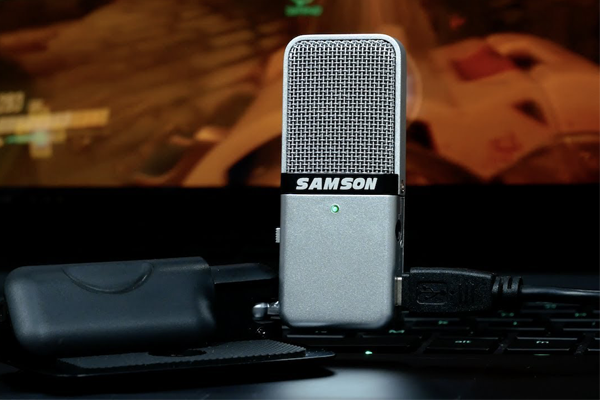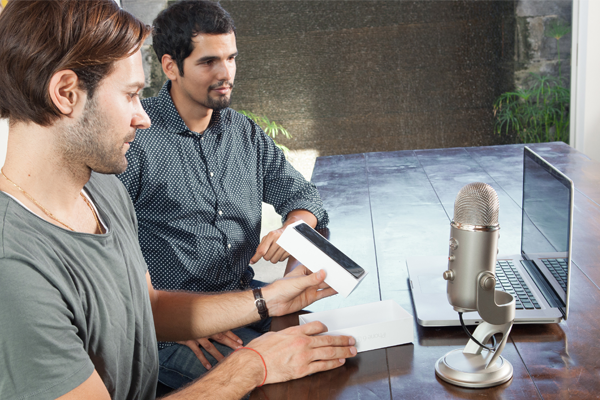It’s never been easier to communicate online. Advanced computer processors and high speed internet have made video communication commonplace, at home and in the workplace. However, while most PC and Mac computers come with powerful built-in cameras, the onboard microphones usually leave a lot to be desired. We highly recommend investing in an external computer microphone. More specifically, a USB microphone.
It’s particularly important to invest in an external microphone if you plan to record sound into your computer for reasons other than a video conference call. For example, if you plan to start your own podcast, record yourself singing or making music, or start your own YouTube channel. These mediums demand high quality audio, and you won’t be able to record that using an internal computer microphone.
Below we’ve broken down everything you need to know about enhancing the sound recording capabilities of your computer or laptop by using an external computer microphone.
Why Shouldn’t I Use The Internal Microphone?

The built-in microphone is not the highest quality component inside your computer. In fact, there’s a good chance you’ve already had a frustrating experience with it. Maybe you’ve had to speak louder than comfortable on a video call so that the other participants could hear you. Or perhaps you’ve had to mute your microphone when not speaking because it was transmitting white noise or background sounds.
Some built-in microphones are omnidirectional, so they pick up background noise in addition to your voice. Other computers use a directional microphone. However, because the microphone is fixed inside your computer, you can’t adjust the direction it’s recording in. If you’re not speaking in the specific zone where the microphone records sounds from, it won’t pick up your voice. That makes it especially difficult for more than one person to use the same computer during a conference call.
However, even if your microphone does manage to correctly isolate and record your voice, the quality of the sound will still be poor. Internal microphones are designed to be as small and unobtrusive as possible while still being practical. They don’t have the mechanics to record high quality audio.
What’s a USB Microphone?

A USB microphone is simply an external sound recording device that connects to your computer via a USB cable. While there are a wide range of models available, it’s safe to say every USB microphone has a more sophisticated construction than your internal computer microphone. Some of them are even capable of professional-grade recording.
Most microphones are either dynamic or condenser microphones. Dynamic microphones record sound using electromagnetic induction. When sound enters the microphone, it moves the diaphragm, which is connected to a coil of wire suspended in a magnetic field. This creates an electric audio signal. They’re generally more affordable, durable, and versatile, and are ideal for recording louder sound sources.
Condenser microphones use a capacitor to convert sound into an electric signal. This means they require a constant and higher source of power to operate. However, it also allows them to record sound at a higher quality. Condenser microphones are more sensitive, and ideal for recording in quieter soundscapes, such as inside a studio.
Most USB microphones are condenser microphones, as they are generally used to record voices, a soft sound source. Although even a dynamic USB microphone would be an effective upgrade from your onboard computer microphone.
Which Microphone Should I Buy?

The Blue Yeti ($139) is an incredibly popular USB microphone. The versatile, tri-capsule condenser microphone is capable of recording 16-bit/48khz broadcast-quality sound. While it was originally released in 2009, an upgraded version, the Blue Yeti X ($189.99), was released in 2019. It uses four capsules and can record up to 24-bit/48khz. Both models offer 4 pattern modes for recording: cardioid, stereo, omnidirectional, and bidirectional.
Cardioid recording is best suited for recording a single voice speaking directly into the microphone. It’s ideal for recording a podcast, vlog, or vocals. Stereo is better suited for recording a slightly wider soundscape, for example if you wanted to record yourself playing an acoustic guitar. Omnidirectional is ideal for recording atmospheric sound, such as multiple voices for a conference call. Bidirectional records in a figure-eight pattern, and is best for a two-person interview.
Other condenser models we recommend include the AKG Lyra ($186.25), the Audio-Technica AT2020+ ($149), the Rode-NT-USB-Mini ($99), and the Samson Meteor ($69.99). The AKG Lyra is also a 24-bit/48khz four-capsule microphone that offers similar pattern recording options. The Audio-Technica, Rode, and Samson microphones only offer cardioid recording, yet are smaller, lighter, and more affordable. All four come with a stand or tripod, as do the Yeti microphones.
If you’re specifically looking for an omnidirectional microphone that’s ideal for use in a conference room, we recommend the MXL AC-404 ($74.95). If you just want an inexpensive alternative to your built-in mic that doesn’t take up a lot of space, check out the Samson Go ($49.99).
Summary
Hopefully we’ve convinced you not to rely on your built-in computer microphone. While family, friends, and colleagues may forgive bad sound on a video call, the potential fan base of your podcast, music, or YouTube channel are less likely to be magnanimous. Don’t let a bad microphone hinder your potential.











